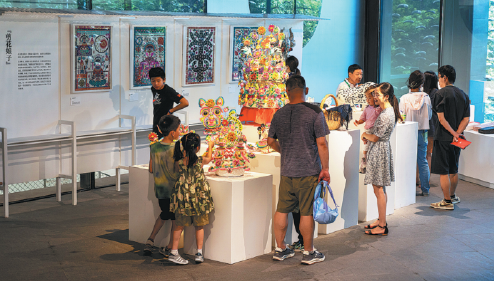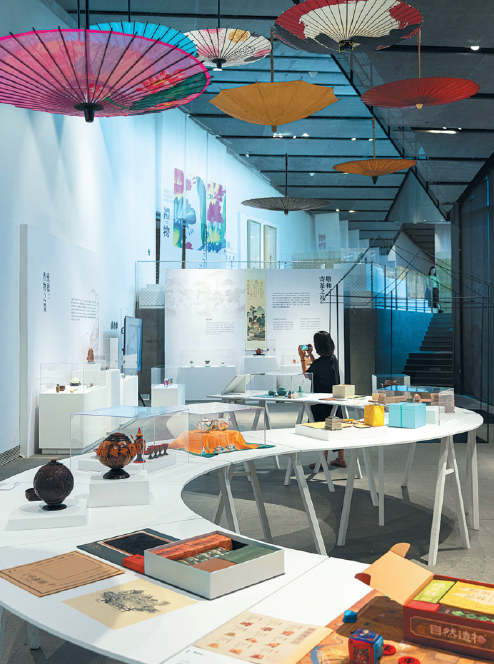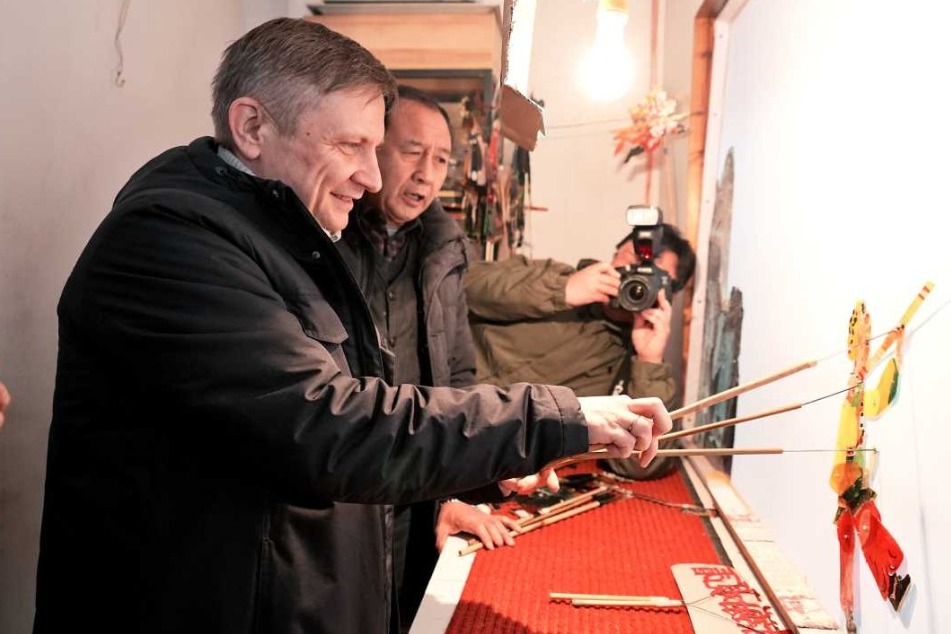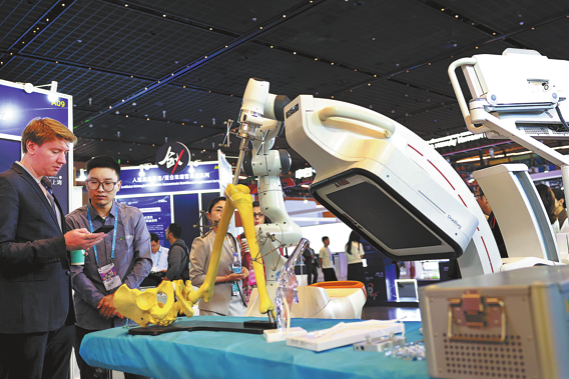A proud history of giving gifts
Exhibition showing lifestyle of Juxi village, Zhejiang province, reveals overlooked links to Confucius, despite residents honoring their culture over the centuries, Cheng Yuezhu reports.

In the mountainous regions of Jinhua, Zhejiang province, lies a village called Juxi. Unbeknown to many, the village has preserved a centuries-old connection with Confucius.
It is recorded that in 1130, Confucius' 48th generation descendant Kong Duangong sought refuge from the war and settled in Jinhua, and his descendants still live in the village, making it the largest residential cluster of the descendants of Confucius in Jiangnan, the region south of the lower reaches of the Yangtze River.
When Liu Yilan, curator and director of public education at the Art Museum of the China Academy of Art in Hangzhou, Zhejiang province, first visited Jinhua during a field trip and saw the ancient tree believed to have been planted by Kong Duangong, she immediately sensed that the village was far from ordinary.
"We were taken to the Confucius temple, where we saw well-preserved genealogies and ceremonial artifacts belonging to the descendants of Confucius, and learned their deeply moving stories of migrating to this place and upholding family traditions," Liu says.
Along with her team, Liu visited the villagers, learned their traditions, and studied how they follow the rites and traditions of Confucianism and still observe them in their everyday lives.
Based on her research, Liu compiled a list of 10 rituals in Juxi village, categorizing them according to 10 aspects, from ceremonial and festive practices to neighborhood relations and cultural reverence.
Liu's findings, the transcripts of her interviews and associated artifacts are being shown in an ongoing exhibition she curated, themed on rites and gifts. With Juxi village as the main case study, the exhibition traces the history of rites, and explores the cultural significance of gifts in China.
Liu breaks down the Chinese word liwu (gifts) into li and wu. "The first part, li, has rich connotations, including the meaning of rites, etiquette, politeness, ceremonies among others," she says. "The latter, wu, is common and easy to understand, and means objects or things, but in the field of material culture studies, objects hold the special significance of consolidating culture."
In her opinion, li is one of the core values of traditional Chinese culture, with an emphasis on mutual respect, reverence and etiquette among people. Gifts represent the act of giving items as a way of expressing respect, gratitude, friendship among other forms of goodwill.
"During my research and travels in rural areas, I sensed the presence of Confucian principles like moderation and order in the villages' customs and regulations, as well as in the relationships between villagers," Liu says.
During her visit to 94-year-old Kong Jinliang, a 75th generation descendant, Kong Jinliang spoke of the village tradition of making sacrifices to the ancestors that predates the founding of the People's Republic of China in 1949.
"I lived with my grandparents when I was little and my grandfather was a farmer," Kong Jinliang says.
"He didn't have much education and never talked to us about Confucius, but he did say that it is important for people to value loyalty and filial piety."
Kong Jinliang also says that despite being poor, his grandfather was highly respected in the village and took the role of leader whenever the village made sacrifices to the ancestors.
Every Sept 28, the conventional day of paying homage to Confucius, a ceremony is held in the village's temple.
"The regular ceremony is usually small-scale, but every 10 years, a grand ceremony is held, where a whole cow, pig, sheep and other ceremonial items are offered. The small-scale ceremonies offer pork, chicken, alcohol, incense, candles, joss paper ingots and suchlike," Kong Jinliang says.
He took over from his grandfather and became host of the ceremonies, often standing to one side and instructing attendees in the rituals, which include kneeling and kowtowing to a statue of Confucius.
Gifts are an indispensable component of the village rites and ceremonies. For weddings, they traditionally give dowries, like sets of tinware comprising a pair of candlesticks, teapots and wine jugs, and custom-made furniture, including square tables, armchairs, cabinets and wardrobes.
Apart from upholding Confucian traditions, Juxi villagers have also come to harmoniously coexist with Zhejiang regional customs over the years, some of which evoked Liu's childhood memories of growing up in the countryside in Zhejiang province.
Each Lantern Festival, on the 15th day of the first lunar month, apart from common practices like the dragon dance and lantern displays, Juxi residents light small red candles throughout the village, from the temples and bridges, to every corner of their households, including doors, windows, staircases, bedside tables and pillars.
According to Liu, these practices resemble those of her own hometown in Zhejiang's Taizhou and date back to ancient times when people set fires, a symbol of light, warmth and hope, at the beginning of spring to pray to the gods for a year of good harvests.
The exhibition taking place at the Crafts Museum of China Academy of Arts includes 38 case studies and over 500 exhibits covering topics such as gifts as an homage to nature, gifting and interpersonal relationship, as well as religious items and gifts.
It also takes a modern viewpoint on gifts, as Liu observes the recent trend of returning to traditional gifting practices at festive and ceremonial occasions, and an increasing focus on the design of gifts.
"Professional designers have become involved in the design of merchandise related to rural intangible cultural heritage, and professional organizations devoted to promoting folk arts are also taking part, infusing modern design with contemporary gifts and expanding their reach," Liu says.
A special section of the exhibition is devoted to the change in gifts, featuring cultural merchandise, especially the popular creative products developed by museums and art galleries.
"These new designs not only have a fresh appearance but also introduce new functionality into gifts, allowing them to carry cultural significance and provide users with insights into life, reflecting the contemporary outlook on gifts," she adds.



Today's Top News
- How China's initiatives are paving a new path to a better world
- Another sign of Japan's right-wingers' dangerous ambition to break free of all postwar constraints
- Hainan's special customs operations start strong
- Macao SAR holds flag-raising, reception to mark 26th anniversary of return to motherland
- China issues rules to regulate pricing practices of internet platforms
- US hits over 70 IS-linked targets in Syria in massive retaliatory strikes






























